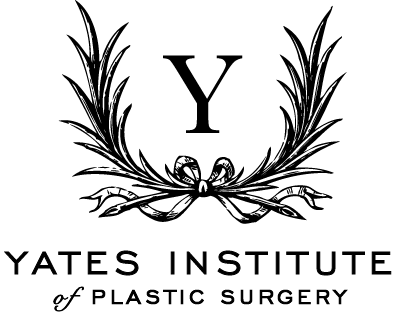Pre and Post-Op Tips for Better Results after Facelift Surgery
Your Guide to Better Results after Facelift Surgery
Facelift surgery has the power to turn back the clock, but achieving the best possible results requires a partnership between you and your plastic surgeon. That's why I'm committed to providing you with exceptional care, natural-looking results, and the knowledge you need to make your facelift experience a success. Here are my recommendations to help you get better results after your facelift surgery.
Preparing for Your Facelift – Pre-op Tips
Educate yourself about the facelift process
Before starting your facelift journey, you should take the time to understand the various techniques available and how they can address your concerns. I perform different facelift methods, each designed to target different areas of the face and produce optimal results.
The traditional facelift, also known as a full facelift, addresses sagging skin and deep wrinkles in the mid to lower face and neck. This technique involves making incisions along the hairline and around the ears, allowing me to reposition the underlying tissues and remove excess skin for a more youthful appearance.
For those with mild to moderate signs of aging, a mini facelift may be a suitable option. This less invasive technique focuses on the lower face and neck, requiring smaller incisions and resulting in a shorter recovery time. A neck lift, on the other hand, specifically targets sagging skin and bands in the neck area, creating a more defined and youthful jawline.
When considering a facelift, you should have realistic expectations and openly communicate your goals. During our consultation, I will listen to your concerns, assess your facial structure, and discuss the best approach to help you achieve your desired outcome. By carefully considering factors such as your skin quality, bone structure, and the extent of aging, I can create a treatment plan that delivers natural-looking results.
Prime your body for optimal healing
Preparing your body for surgery is just as important as choosing the right facelift technique. Embracing a healthy lifestyle in the weeks leading up to your procedure can improve your body's ability to heal and recover.
Start by adopting a nutrient-rich diet filled with lean proteins, fruits, vegetables, and whole grains. These foods provide the essential nutrients for tissue repair and regeneration. Staying hydrated is also important, as it helps maintain skin elasticity and promotes overall wellness.
Regular exercise is another component of pre-surgery preparation. Engaging in moderate physical activity, such as brisk walking or yoga, can improve circulation, boost your immune system, and reduce stress. However, avoid strenuous activities in the weeks leading up to your facelift, as they may increase your risk of injury or complications.
If you smoke, it's imperative that you quit at least four weeks before your surgery. Nicotine constricts blood vessels and reduces oxygen supply to your tissues, which can impair healing and increase the risk of complications.
Together we will identify any medications or supplements that could interfere with your recovery so that you can avoid them before your procedure. Some common examples include blood thinners, anti-inflammatory drugs, and certain herbal supplements. Bring a complete list of your current medications for our consultation and we will discuss any necessary changes that will help ensure a safer and smoother recovery process.
Create a recovery sanctuary
A stress-free recovery starts with some home preparations. Before your surgery, enlist the help of a trusted friend or family member who can stay with you for the first few days post-op. Having someone to assist with daily tasks, provide support, and monitor your progress can make a world of difference in your recovery experience.
Transform your living space into a cozy recovery haven by setting up a comfortable resting area with plenty of pillows to keep your head elevated. This will help minimize swelling and promote proper healing. Stock up on easy-to-prepare meals, healthy snacks, and hydrating beverages to nourish your body during the recovery process.
As you plan for your facelift, give yourself permission to take a break from work and other obligations. Arrange for adequate time off to focus solely on your recovery and well-being. This may involve coordinating with your employer, arranging childcare, or delegating household responsibilities to family members or friends.
Post-op Tips to Get Better Results after Facelift
Become a star pupil in post-op care
Once your facelift surgery is complete, the real journey begins. The success of your procedure and the quality of your results depend heavily on how well you adhere to your post-operative care instructions. Me and my team will provide you with a care plan tailored to your specific needs and goals.
Attending all scheduled follow-up appointments is essential to monitor your progress, address any concerns, and ensure that your healing process is on track. These appointments allow me to assess your results, make any necessary adjustments, and provide guidance on how to optimize your recovery.
Effectively managing your prescribed medications is another essential aspect of post-op care. I may recommend pain medication to keep you comfortable, antibiotics to prevent infection, and other medications to support the healing process. Make sure to take these medications as directed and report any adverse reactions or concerns to my office promptly.
One of the secrets to speeding up your healing process is wearing your compression garments as directed. These garments help minimize swelling, support your newly contoured tissues, and promote smooth, even healing. Wear your compression garments consistently, removing them only for brief periods as instructed, to achieve the best possible results.
Master the art of recovery
In the days and weeks following your facelift, there are several strategies you can employ to enhance your comfort and promote healing. One of the most effective tools is the cold compress. Applying cold compresses to your face and neck can help reduce swelling, alleviate discomfort, and soothe your skin. Be sure to follow my instructions on the frequency and duration of cold compress application to maximize their benefits.
Your sleep position may seem like a small detail, but it can have a considerable impact on your facelift results. Sleeping with your head elevated on several pillows helps minimize swelling and prevents your skin from pulling or stretching as it heals. Aim to maintain this elevated sleep position for at least the first two weeks after your surgery, or as directed by your surgeon.
As you recover, it's natural to want to return to your normal activities as soon as possible. However, you should gradually reintroduce activities without compromising your healing process. In the first few weeks, focus on rest and gentle movements, such as short walks around your home. As your energy levels increase, you can slowly incorporate light exercise and other activities into your routine.
Embrace the journey and trust the process
The journey to your final facelift results is a gradual one, and it's essential to become familiar with the timeline of healing. In the first few weeks, you may experience swelling, bruising, and some discomfort, which is entirely normal. As the swelling subsides and your tissues heal, you'll begin to see the initial improvements in your facial contours and skin quality.
Remember that complete healing and the final revelation of your results can take several months. Your skin and tissues will continue to settle and refine over time, with most patients experiencing their final results around the six-month mark. Trusting the process and being patient with your body as it heals is key to a positive and satisfying facelift experience.
Throughout your journey, I am committed to being your partner and guide. My role extends far beyond the operating room, and I am here to support you every step of the way. Never hesitate to reach out to my office with any questions, concerns, or updates on your progress. Whether you need advice on managing a particular symptom or simply want reassurance that your healing is on track, my team and I are always here to help.
FAQs about Facelift Surgery Results
How long does a facelift procedure typically take?
· The duration of a facelift procedure can vary depending on the extent of work being done and the specific techniques used. On average, a full facelift can take between 3 to 4 hours, while a mini facelift may take around 1 to 2 hours. During your consultation, I will provide you with a more accurate estimate based on your individual needs and goals.
Will I have visible scars after my facelift?
· As with any surgical procedure, a facelift will result in some scarring. However, I take great care to place incisions in less visible areas, such as along the hairline and around the ears, to minimize their visibility. I also use advanced techniques and meticulous closure to ensure that your scars heal as finely as possible. With proper care and time, your scars should fade significantly and become barely noticeable.
When can I resume wearing makeup after my facelift?
· It's important to give your skin time to heal before applying makeup after your facelift. In general, I recommend waiting at least 2 to 3 weeks before resuming your regular makeup routine. This allows your incisions to heal properly and reduces the risk of irritation or infection. When you do start wearing makeup again, choose gentle, non-comedogenic products and apply them carefully around the incision sites.
How long should I wait before attending social events or returning to work after my facelift?
· The amount of time you should take off from social events and work will depend on the extent of your surgery and your individual healing progress. Most patients feel comfortable attending social events and returning to work about 2 to 3 weeks after their facelift. However, some may need more time, especially if their job involves strenuous activity or public-facing roles.
Will I need to have additional treatments or procedures to maintain my facelift results?
· A facelift can provide long-lasting results, but you should know that your face will continue to age naturally over time. To maintain your refreshed appearance, I may recommend non-surgical treatments, such as injectable fillers or laser resurfacing, to address minor signs of aging as they arise. Additionally, maintaining a healthy lifestyle, protecting your skin from sun damage, and following a good skincare routine can help prolong the benefits of your facelift. During your follow-up appointments, we can discuss a personalized maintenance plan to keep you looking your best for years to come.
Further Reading about Facelift with Dr. Essie Yates
· Read more about Is a Facelift Right for Me?
· Read more about Facelift Recovery Tips for Fort Lauderdale Residents
· Read more about How Much Is a Facelift in Coconut Grove?
· Read more about Am I too young for a facelift?
· Read more about How long swelling lasts after a facelift?
Medical References for Facelift Results
· Facelift Part I: History, Anatomy, and Clinical Assessment
· Evolution of Superficial Muscular Aponeurotic System Facelift Techniques


